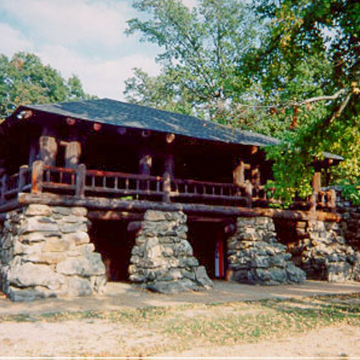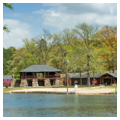In 1933 the State acquired the homestead of Benjamin F. Crowley for recreational development and the Civilian Conservation Corps (CCC), 4733rd Company, constructed several buildings on the attractive hilly and forested site. All the structures are in the rustic mode, following guidelines set out by the Public Works Administration (PWA) as appropriate for rural parks and natural sites. The most impressive structure is the bathhouse beside the spring-fed swimming lake. It is a rectangular one-and-a-half-story log and frame structure with a rear T addition and is banked into the side of a hill. The building’s lower level is composed of massive rough-hewn stones. The roof is hipped, and the walls have casement windows. The lower floor has separate bathhouses for men and women, and the upper floor is a multipurpose space. The CCC also built a dining hall and kitchen for visitors and the park’s staff, a comfort station, and a stone bridge.
You are here
Crowley’s Ridge State Park
If SAH Archipedia has been useful to you, please consider supporting it.
SAH Archipedia tells the story of the United States through its buildings, landscapes, and cities. This freely available resource empowers the public with authoritative knowledge that deepens their understanding and appreciation of the built environment. But the Society of Architectural Historians, which created SAH Archipedia with University of Virginia Press, needs your support to maintain the high-caliber research, writing, photography, cartography, editing, design, and programming that make SAH Archipedia a trusted online resource available to all who value the history of place, heritage tourism, and learning.




















